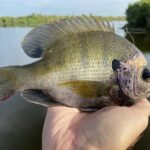So you’ve caught a long, slimy mean-looking fish. It has sharp teeth, and rough scales, and looks like a dinosaur…
Did you catch a Bowfin or a Snakehead? Let’s dive in!
Table of Contents
Are Bowfin and Snakehead the same?
Bowfin and Snakehead are not the same species of fish. The Bowfin is native to the United States and common throughout the southeastern and midwestern states. Snakehead may refer to any of the four species of snakehead (Genus Channa) that are native to Asia. All four species of Snakehead are invasive to the United States and often confused with the native Bowfin.
How To Tell The Difference Between Bowfin vs Snakehead
The easiest way to distinguish the difference between a bowfin and a snakehead is the type and placement of the fins.
- Snakehead have a very long dorsal fin (on top) and long anal fin (on bottom).
- Bowfin have a long dorsal fin (on top) but small pelvic fins (middle bottom) and small anal fins (bottom).
- Snakehead have a long, pointed head that is flattened on the top.
- Bowfin have a distinct ‘eye’ spot near the base of the tail.
- Snakehead have pelvic fins beneath the pectoral fins.
- Bowfin are often tan with hints of green, yellow or light brown.
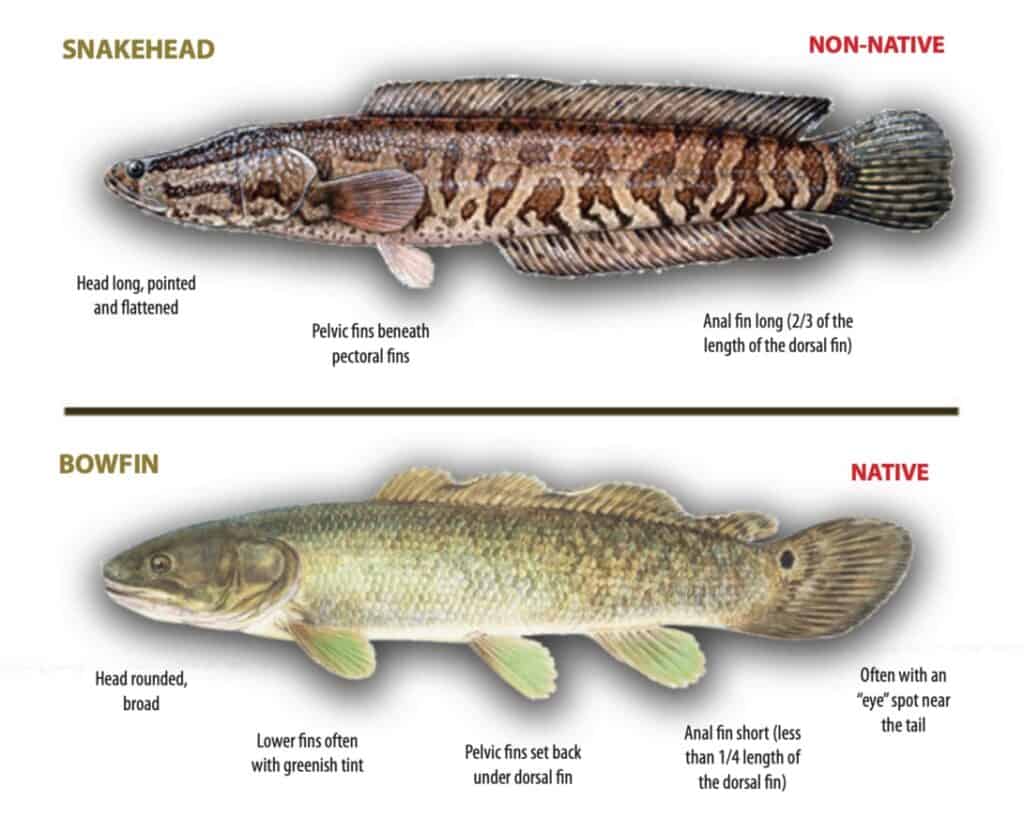
Bowfin are native to the United States and common in the southern and midwestern states. They are known to hit bass fishing lures, have very sharp teeth, and are from an ancient order of fish called Amiiformes. Males have a distinct spot on the upper portion of their tale.
Snakehead are a family of fish native to Asia. There are currently 4 recognized species of invasive snakehead fish found in the United States, likely introduced inadvertently from the aquarium or exotic food trade. Let’s take a closer look at each species and where they can be found.
Bowfin
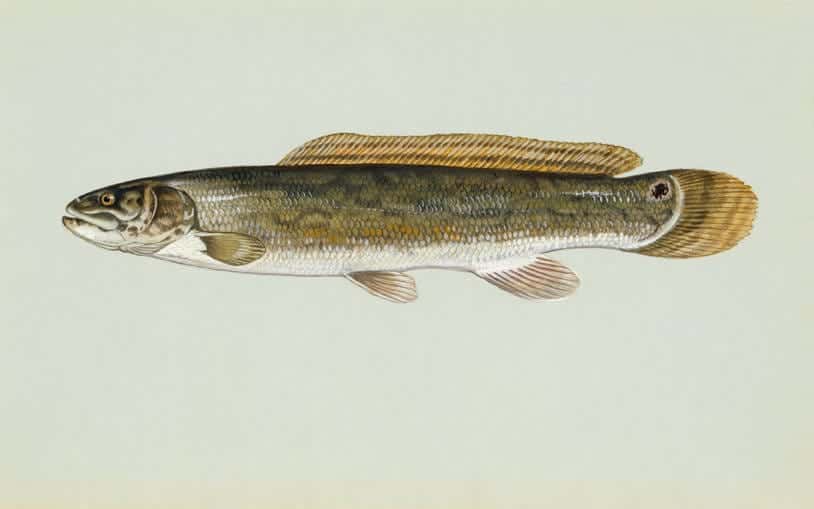
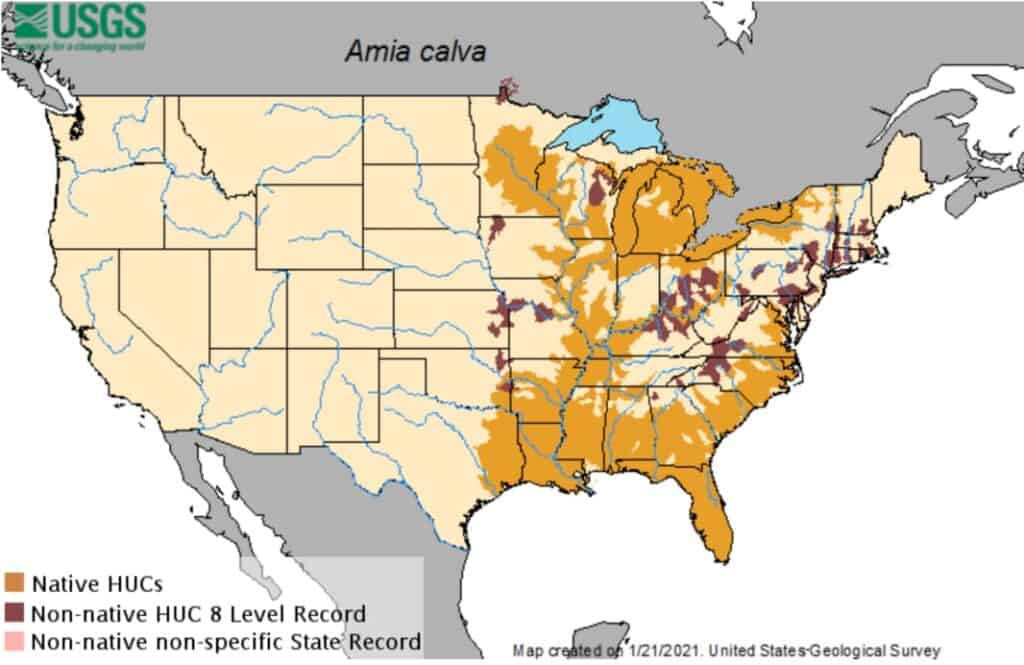
| Name | Bowfin (Amia calva). Also called mudfish, dogfish, swamp trout, grinnel. |
| Appearance | Long stout body, with a hard flat head. Very large mouth with small sharp teeth. May appear tan, brown, or dark black. Males have a spot on the large rounded tail. |
| Habitat | They prefer low oxygenated waters. Often found in swamps, sloughs, and lakes with thick vegetation. |
| Range | Found through the American south, coastal plain, and throughout the midwest along the Mississippi River drainage and its tributaries. |
| Behavior | A strong predatory and solitary fish; Males guard nests made in thick vegetation. Often seen ‘gulping’ air on the surface with their unique air bladder. |
| Size | Common up to 8 lbs or 24 inches. World Record 9.75 kg (21 lb 8 oz) Forest Lake, Florence, South Carolina, USA 29-Jan-1980 |
Northern Snakehead
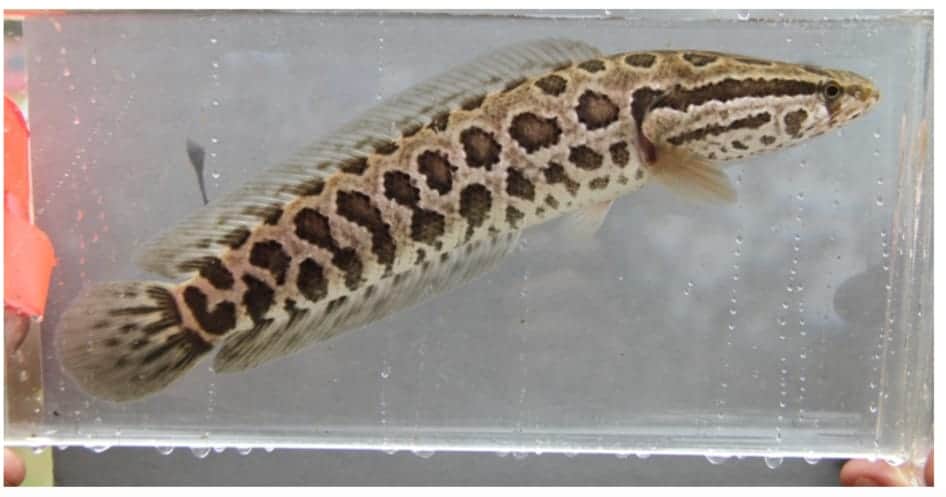
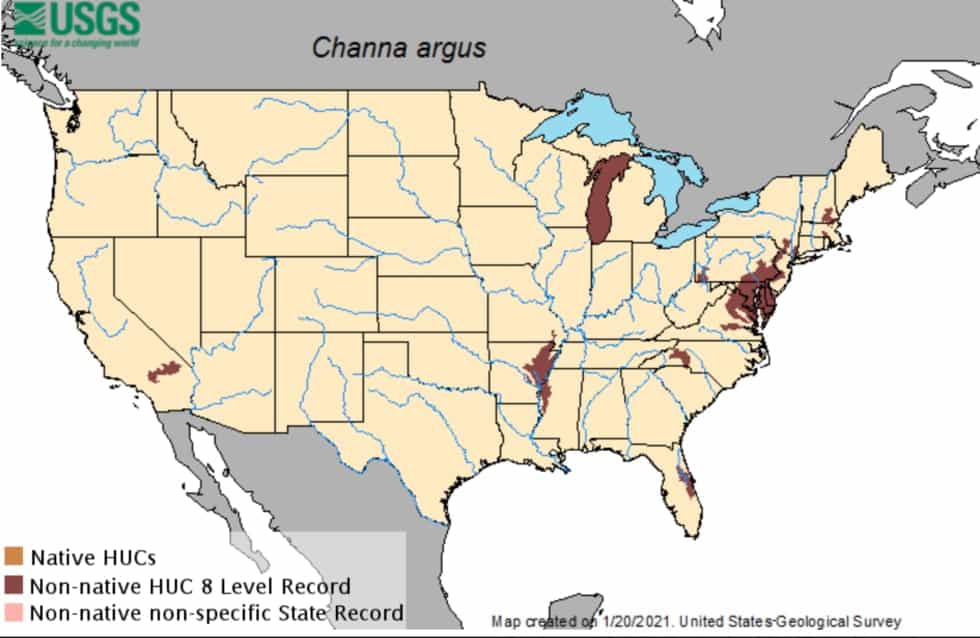
| Name | Northern Snakehead (Channa argus). Also called amur snakehead, eastern snakehead, ocellated snakehead |
| Appearance | A long thin fish with a single dorsal fin running the length of the fish. The overall color is brown with dark black blotches. |
| Habitat | They prefer shallow vegetated areas of ponds, lakes, creeks, and streams. |
| Range | The native range is China, Russia, and Korea. Invasive populations found in 15 US states with large concentrations in Maryland, Pennsylvania, Virginia, and Arkansas. |
| Behavior | An ambush predator, capable of living out of the water for up to 4 days due to an air bladder. Solitary and aggressive, feeding on insects, crustaceans, and small fish. |
| Size | Common up to 6 lbs or 22 inches. World record 8.76 kg (19 lb 5 oz) Potomac Creek, Virginia, USA 15-May-2018 |
Blotched Snakehead
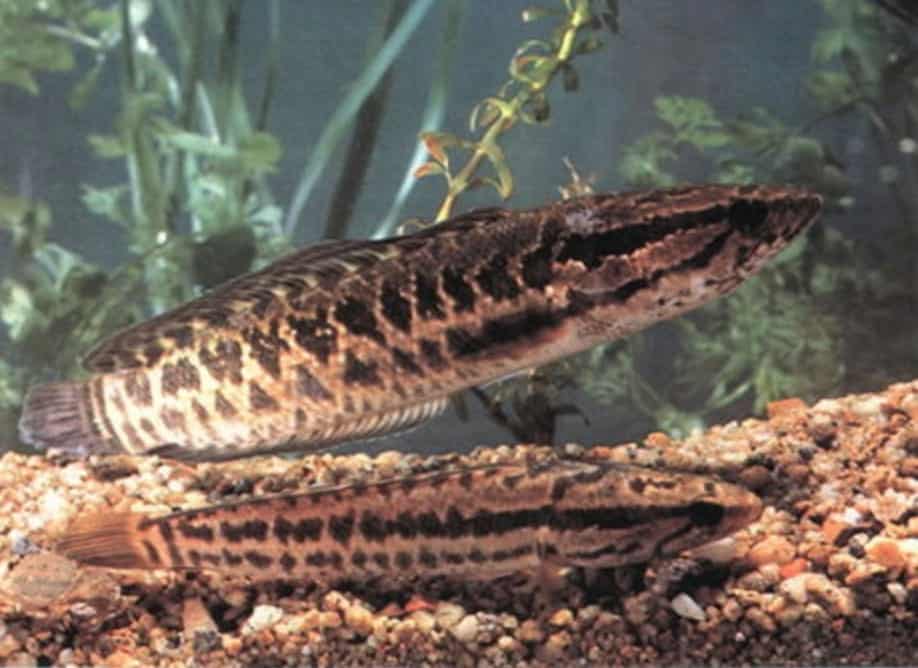
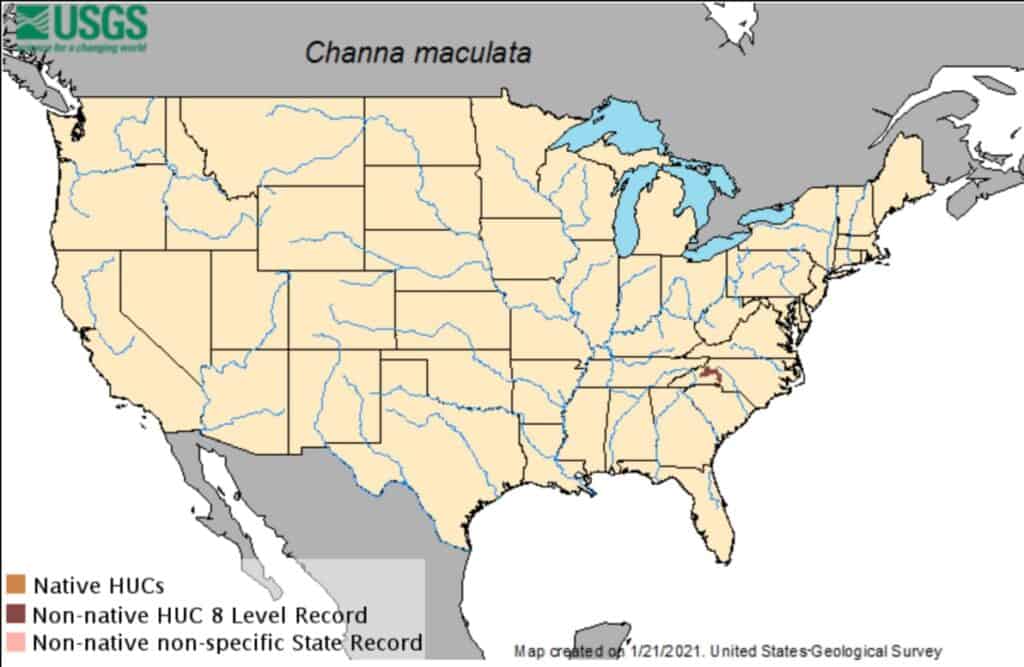
| Name | Blotched Snakehead (Channa maculata) |
| Appearance | Very similar to Northern Snakehead. The overcall color is brown with dark bar-like pattern. |
| Habitat | Generally found in shallow, vegetated areas of streams and ponds. |
| Range | Native range is Southeast Asia. Small invasive populations in Maryland and North Carolina. |
| Behavior | Ambush predator, consuming fish, invertebrates, snakes, frogs, and small mammals. |
| Size | Common up to 1 lb or 12 inches. World Record 3.02 kg (6 lb 10 oz) Ryonan-cho, Kagawa, Japan 16-Aug-2003 |
Bullseye Snakehead

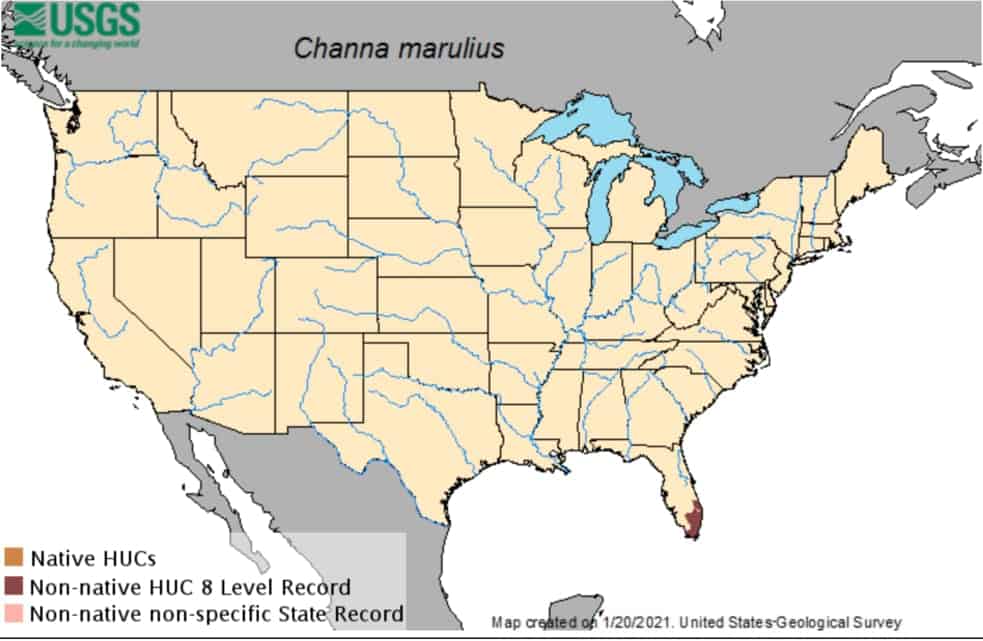
| Name | Bullseye Snakehead (Channa marulius) |
| Appearance | Long narrow body fish, usually with red eyes and dark brown-black coloration. Anal fins and dorsal fins run almost entire length of the body. Distinct orange spot on tail. |
| Habitat | Commonly associated with canals, ponds and ditches of south Florida. High tolerance for stagnant low oxygen water systems. |
| Range | Native to south Asia; large invasive population in Broward in Miami Dade counties of South Florida. |
| Behavior | Solitary ambush predators capable of reaching medium-large size. Aggressive sport fish that primarily feed on small fish and crayfish. |
| Size | Common up to 4 lbs or 19 inches. World Record 6.86 kg (15 lb 2 oz) Fort Lauderdale, Florida, USA 24-Jun-2018 |
Giant Snakehead
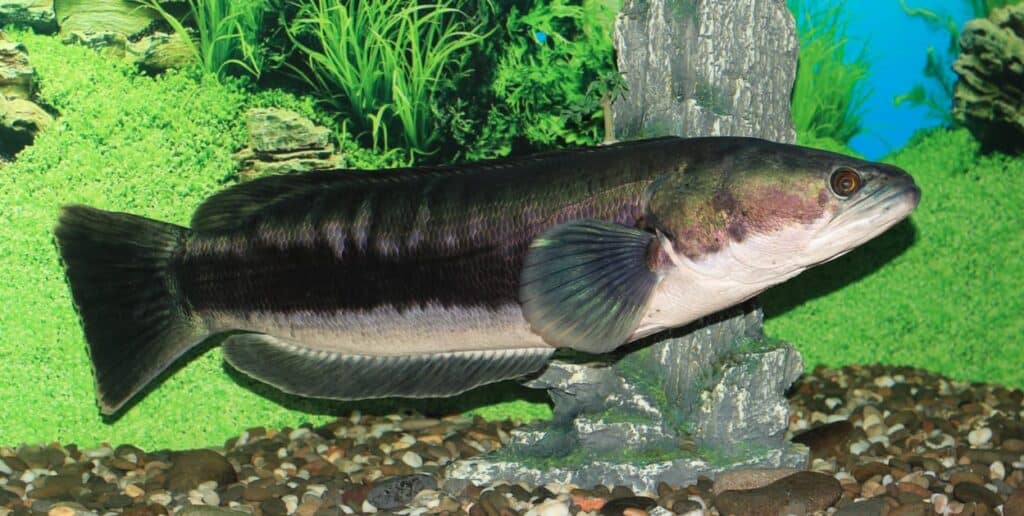
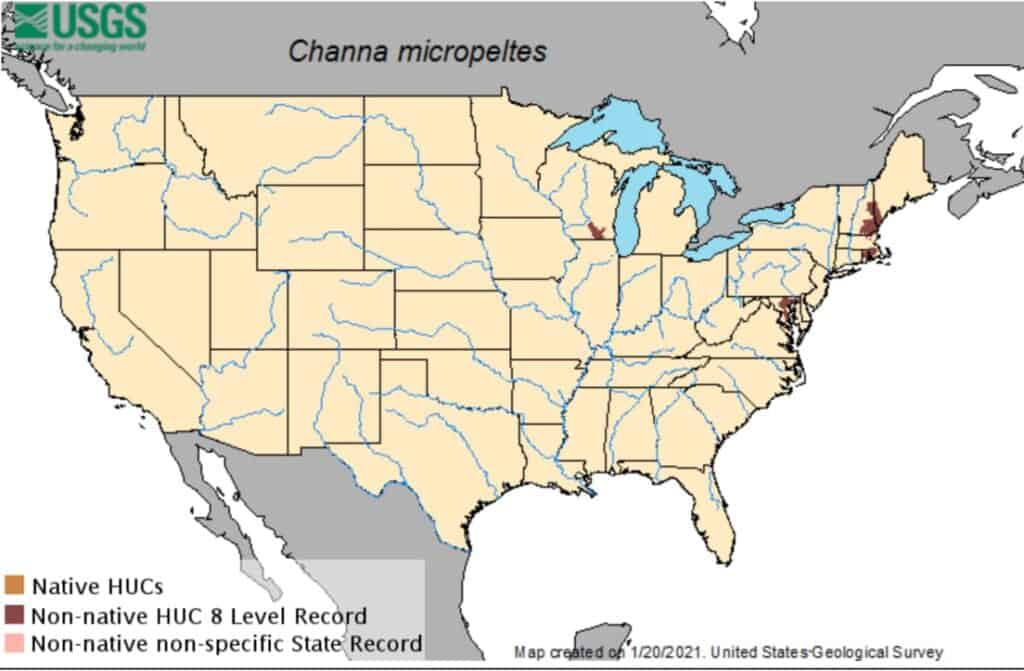
| Name | Giant Snakehead (Channa micropeltes) |
| Appearance | Long slender body with a dark-colored blotched line running the entire length of the fish, with leopard-like partners above and below. Coloration can vary from brown-green-black. |
| Habitat | They prefer lakes, reservoirs, canals, and rivers—most commonly deep, standing or slow-flowing water |
| Range | Native to Tropical Asia. Invasive populations documented in Maine, Maryland, Massachusetts, Rhode Island, Tennessee, and Wisconsin. |
| Behavior | A strong and powerful predator, often active during daytime. Feeds on fish, frogs, and even birds. |
| Size | Common up to 6 lbs or 24 inches. World Record 13.61 kg (30 lb 0 oz) Rawang, Malaysia 28-Feb-2018 |
Can you eat Bowfin?
Bowfin are not known as a desirable fish to eat like crappie or perch; although yes they are completely edible. The meat tends to be soft and jelly-like instead of nice firm fillets.
Most bowfin recipes call for smoking, making patties, or stew due to its strong flavor and soft consistency.
In some areas of the United States, Bowfin is regarded as a delicacy. For example, in Louisiana, they are often called “Choupique” and prepared cajun style.
Many Native American tribes revered the Bowfin as a high-quality food source.
How to prepare and cook Bowfin:
As with any fish you’ll want to be sure the meat is prepared for cooking. Keep the bowfin alive as long as possible, or put it immediately on ice to keep it fresh.
Fillet the fish by running your knife down the backbone, and around the large rib cage. Remove the organs and fillet off the meat. You can leave the skin on, or remove it.
To smoke season the fillets generously and place in a smoker for 2-3 hours at a temperature of 175-200 degrees Fahrenheit.
Related: Are Freshwater Drum Good To Eat? You May Be Surprised!
Can you eat Snakehead?
Unlike Bowfin, snakeheads are excellent table fare and highly desired! The meat of a snakehead is firm, white and flaky making it a delicious and versatile fish.
Catching and cooking of snakehead is encouraged because they are invasive and may harm other native fish populations.
In some areas of the world, Snakehead is regarded as having medical properties with the ability to heal wounds and internal injuries.
How to prepare and cook Snakehead
As with any fish you’ll want to be sure the meat is prepared for cooking. Keep the snakehead alive as long as possible, or put it immediately on ice to keep it fresh.
You can also cut the gills to ‘bleed’ the fish. Fillet the fish by running your knife down the backbone, and around the rib cage.
Remove the organs and fillet off the meat. You can leave the skin on, or remove it.
Snakeheads can be prepared in a number of ways, and supposedly…they are delicious!
See Also: Are Carp Good To Eat? Why The Poor Reputation?
Conclusion
Although Bowfin and Snakehead look similar, they are completely different species.
However, both of them can be found in North America and are often caught by anglers when targeting more traditional sport fish.
Both Bowfin and Snakeheads can be a welcome change of pace when fishing- they are strong fighters and are known to jump and spin at the boat.
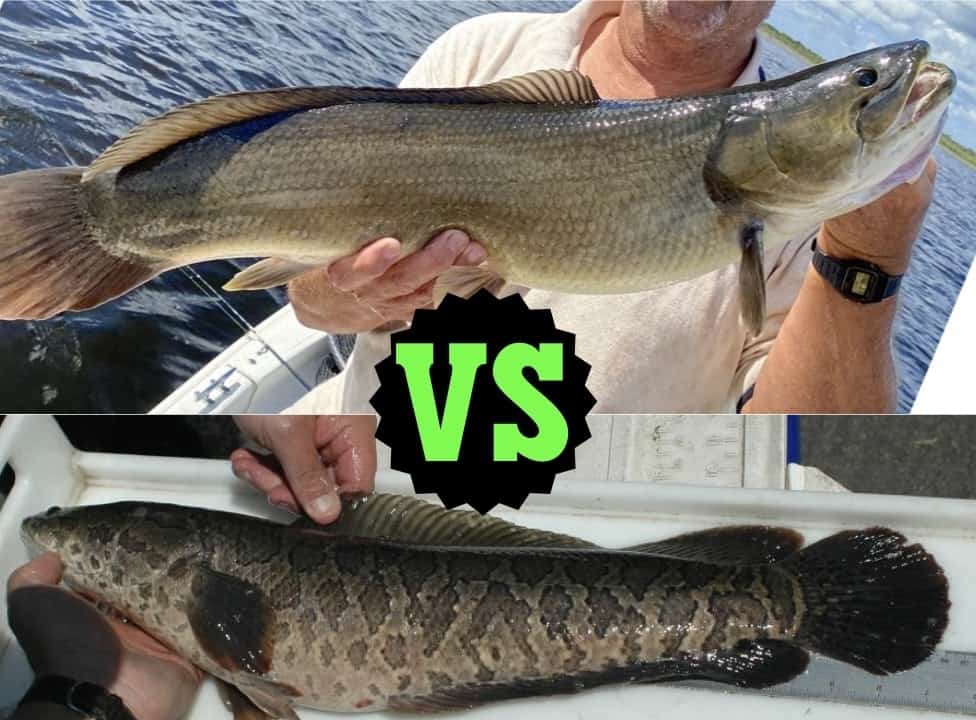
Bowfin are edible and Snakehead have excellent table fare. It’s a great idea to educate yourself on the differences between these fish because you never know when you may catch one.
I hope this article helps you tell the difference between Bowfin vs Snakehead.
Thanks for reading, now go fishing!
Related: Can You Eat Gar Fish? (Results May Surprise You!)
If you haven’t guessed yet, I love fishing and everything about it!
To learn more about why I started Panfish Nation, visit the About page and follow along on Social Media:


Download a copy of my FREE Lure Color Selection Chart & Knot Guide!
Stay up to date with fishing reports, tackle reviews, industry news, and much more! We respect your privacy, unsubscribe at any time.
Additional Reading
- Crazy Facts About the World Record Crappie

- What Size Hooks for Smallmouth Bass? Quick Guide

- Large and in Charge-Mouth: 10 of the Best Bass Lures of All Time (And Where to Buy Them)

- Emperor of the Sun(fish): What You Need to Know About the World Record Bluegill
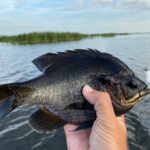
- Coppernose Bluegills: How They’re Different from Common Bluegill
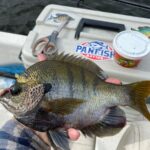
- Bluegill vs Brim: Differences & Terminology, Explained!
